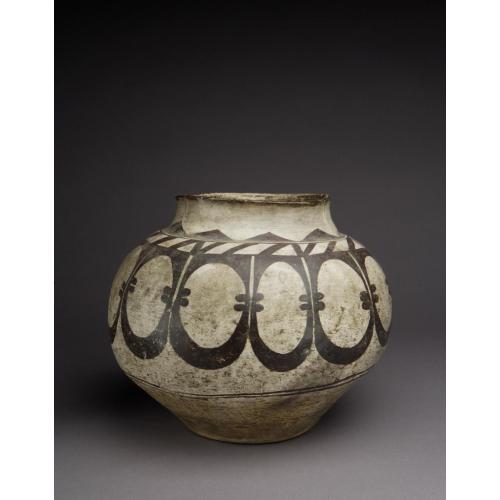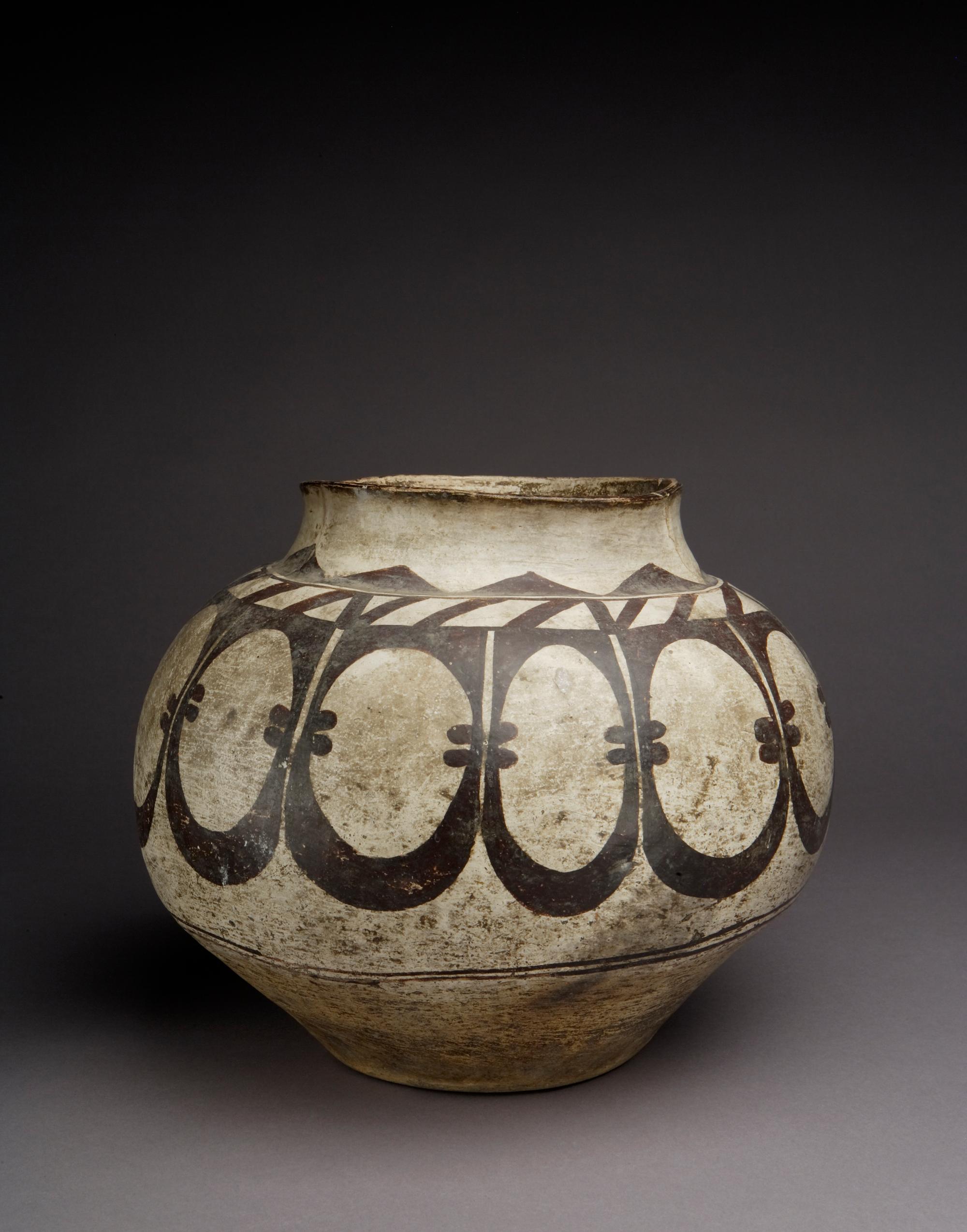
Photograph by Addison Doty. Copyright 2011 School for Advanced Research.
Water jar
Date: 1800-1840
Artist or Maker: Unknown
Dimensions:
Dimensions: 27.9 × 34.3 cm (11 × 13 1/2 in.)
Weight: 2.6 kg (5.8 lb.)
Medium: clay | paints
Credit Line: Indian Arts Fund purchase for the permanent collection, 1931.
Place Made:
Valencia, Cibola, Bernalillo, and Sandoval Counties, New Mexico, Southwest, United States, North America
Object Number: IAF.1638
Not on view
Tribal Collection Review RemarksAccording to the participants in the Acoma collection review visit April 22-24, 2015 (Events Record “Collection Review: Acoma Pueblo, Review 1”): The jar has a bold design that is not intricate. The black paint on this jar may not have been processed as well which explains its brown color as the paint can separate. The entire mouth (rim) is painted black instead of having red/orange on the interior which is unusual. The interior also has white slip till about the shoulder of the jar and the patch on the interior is mud. The bottom/base is a very light orange, almost yellow, which could mean that the artist did not have enough paint or that they were experimenting with a new paint. The lower section of the jar still has the shape of the "puki". This happens when the wet jar sits in the puki and dries and the artist does not push the clay out to achieve the shape we know today. The shape could also be a result of the jar being made in haste. There is a pathway break in the design and the participants say this indicates it is an Acoma jar as Lagunas do not do this.
There was a lot of discussion about the term “Acomita Polychrome”. There was speculation if this term came around due to the establishment of Acomita village and if this style or shape was being made there specifically. This would explain the brown paint and the light orange slip on the bottom as the artists were further away from Acoma and the usual resources used in pottery making.
It was explained that the black paint rocks vary in darkness from reddish brown to black. When making the black paint it is wise to make as much as you will need to complete your design to avoid having multiple shades.
*It was suggested that other Acoma potters who may know more about this time period look at this pot.
According to the participants in the Acoma collection review visit February 26-27, 2019 (Events Record “Collection Review: Acoma Pueblo Review 12”): The shape of a water jar is characterized by usually having a concave base (can also have a flat base) leading to a wider body and shoulder area. The shoulder, which is typically rounded but can also be sharp, leads inward and up to the neck and opening of the water jar. Historic water jars will sometimes have an indentation from the base the pot was built on (also known as a puki).
Water jars of all sizes are made and used. Medium to small size water jars are more commonly used to carry water as the weight of a filled water jar can become quite heavy. Large sized water jars would be used for storing water. Today at Acoma, water jars are still being used and made in both traditional natural and commercial materials.
In Collection(s)
Bibliography:
Historic Pottery of the Pueblo Indians, 1600-1800
- Pg. 127
- Fig. 124
The Pottery of Acoma Pueblo
- Pg. 129
- Fig. 6.32
Matte-Paint Pottery of the Tewa, Keres and Zuni Pueblos
- Pg. 256 (text); 259 (photograph)
- Fig. Plate 31, e
Acoma and Laguna Pottery
- Pg. p. 138, 211
- Fig. 6.6
The Indian Arts Research Center, in collaboration with Native American community scholars, strives to present accurate collections records. Records may be updated as new information becomes available and is reviewed with the Native American community having cultural affinity to particular items. Please write to iarc@sarsf.org if you have questions or concerns related to the documentation.
